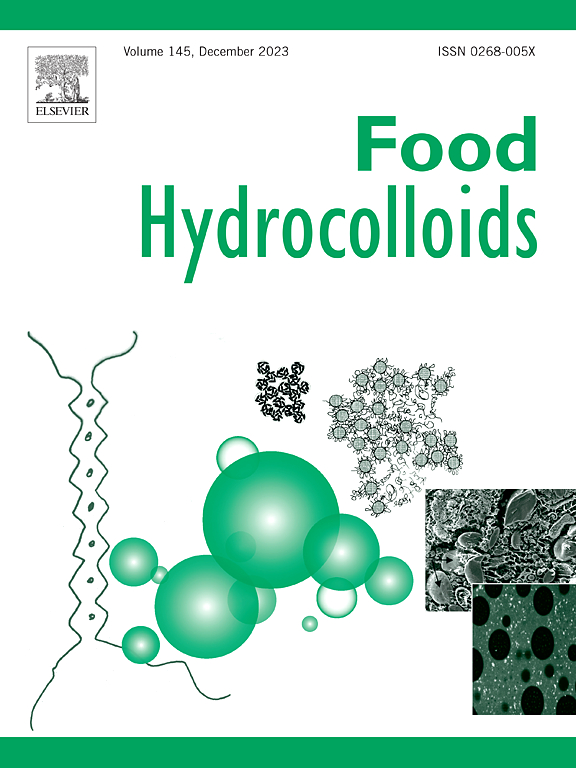Effect of pH and ionic strength on heat-induced pea protein isolate aggregation and gel formation
IF 11
1区 农林科学
Q1 CHEMISTRY, APPLIED
引用次数: 0
Abstract
Heat-induced aggregation and gelation of salt extracted pea protein isolates (PPI) was studied as a function of NaCl concentration (0.0–0.4 M) and pH (3.5–8.5). It was hypothesized that an isolate extracted with NaCl, and subsequently dialyzed would show different composition and techno-functional properties depending on its ionic environment. Protein solubility of PPI was affected by NaCl concentrations and pH, with the lowest solubility measured at pH 4.5, regardless of NaCl concentrations. At pH 3.5, solubility was high at low ionic strengths and decreased with increasing salt. At pH between 4.5 and 7, protein solubility increased in solutions at higher NaCl concentrations. At alkaline pH, where proteins are highly charged, salt concentrations did not affect solubility. Heating induced extensive protein aggregation in the presence of NaCl. However, in the case of heated samples in deionized water at pH 3.5 and 8.5, limited aggregation was noticed. These results were confirmed using atomic force microscopy on water redispersed samples. Analysis of viscoelastic properties at the least gelation concentration showed that pH and ionic strength affected not only the stiffness but also the linear viscoelastic regime. This work clearly demonstrated that solubility and thermal stability of PPI are affected by charge properties and how the structure and properties of pea protein aggregates may be modulated through careful control of pH and ionic environment, ultimately affecting the bulk properties of pea protein heat-induced gels.

求助全文
约1分钟内获得全文
求助全文
来源期刊

Food Hydrocolloids
工程技术-食品科技
CiteScore
19.90
自引率
14.00%
发文量
871
审稿时长
37 days
期刊介绍:
Food Hydrocolloids publishes original and innovative research focused on the characterization, functional properties, and applications of hydrocolloid materials used in food products. These hydrocolloids, defined as polysaccharides and proteins of commercial importance, are added to control aspects such as texture, stability, rheology, and sensory properties. The research's primary emphasis should be on the hydrocolloids themselves, with thorough descriptions of their source, nature, and physicochemical characteristics. Manuscripts are expected to clearly outline specific aims and objectives, include a fundamental discussion of research findings at the molecular level, and address the significance of the results. Studies on hydrocolloids in complex formulations should concentrate on their overall properties and mechanisms of action, while simple formulation development studies may not be considered for publication.
The main areas of interest are:
-Chemical and physicochemical characterisation
Thermal properties including glass transitions and conformational changes-
Rheological properties including viscosity, viscoelastic properties and gelation behaviour-
The influence on organoleptic properties-
Interfacial properties including stabilisation of dispersions, emulsions and foams-
Film forming properties with application to edible films and active packaging-
Encapsulation and controlled release of active compounds-
The influence on health including their role as dietary fibre-
Manipulation of hydrocolloid structure and functionality through chemical, biochemical and physical processes-
New hydrocolloids and hydrocolloid sources of commercial potential.
The Journal also publishes Review articles that provide an overview of the latest developments in topics of specific interest to researchers in this field of activity.
 求助内容:
求助内容: 应助结果提醒方式:
应助结果提醒方式:


